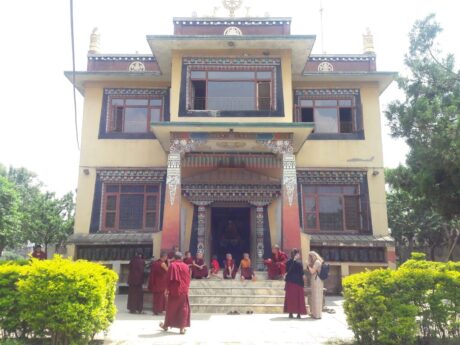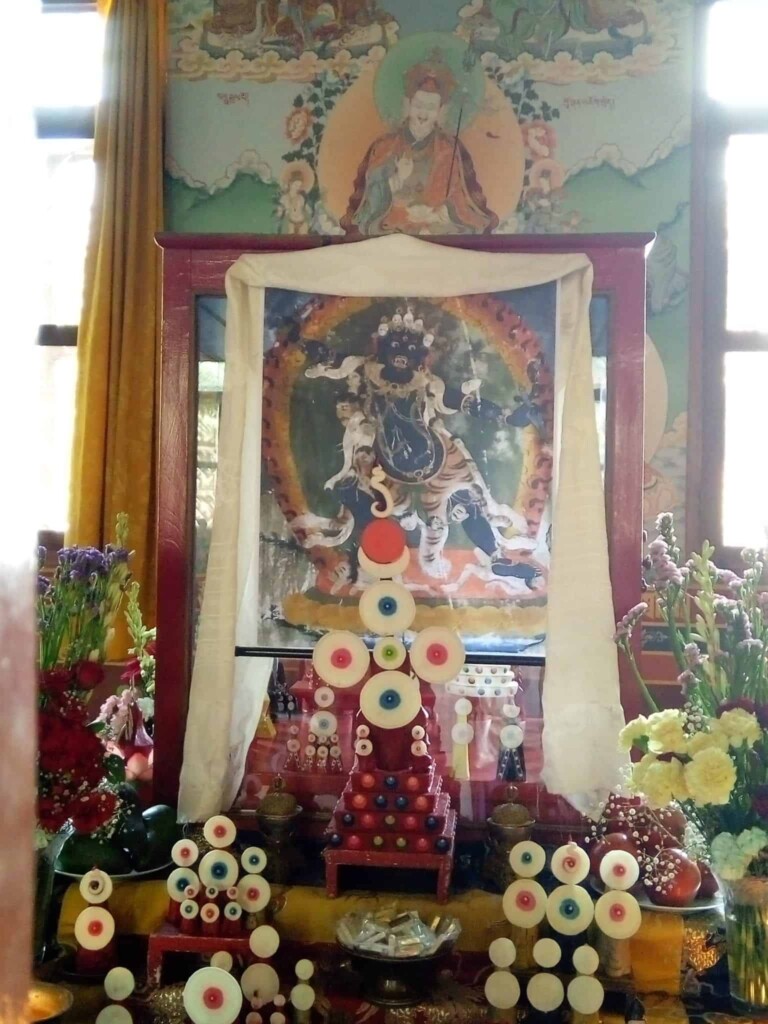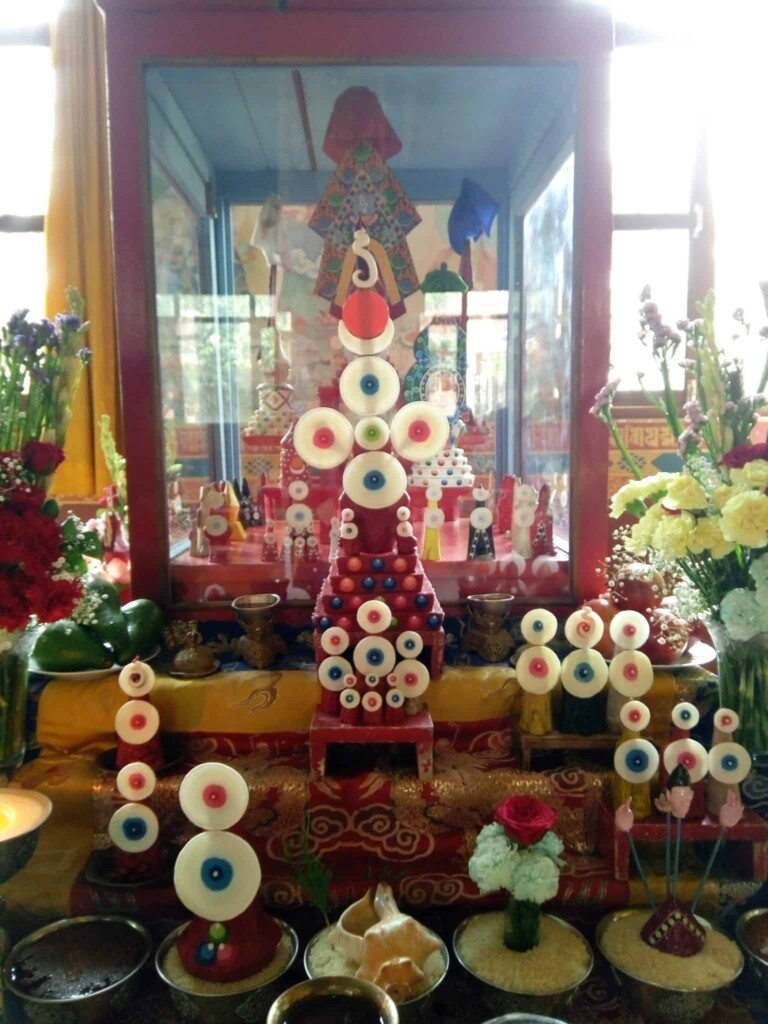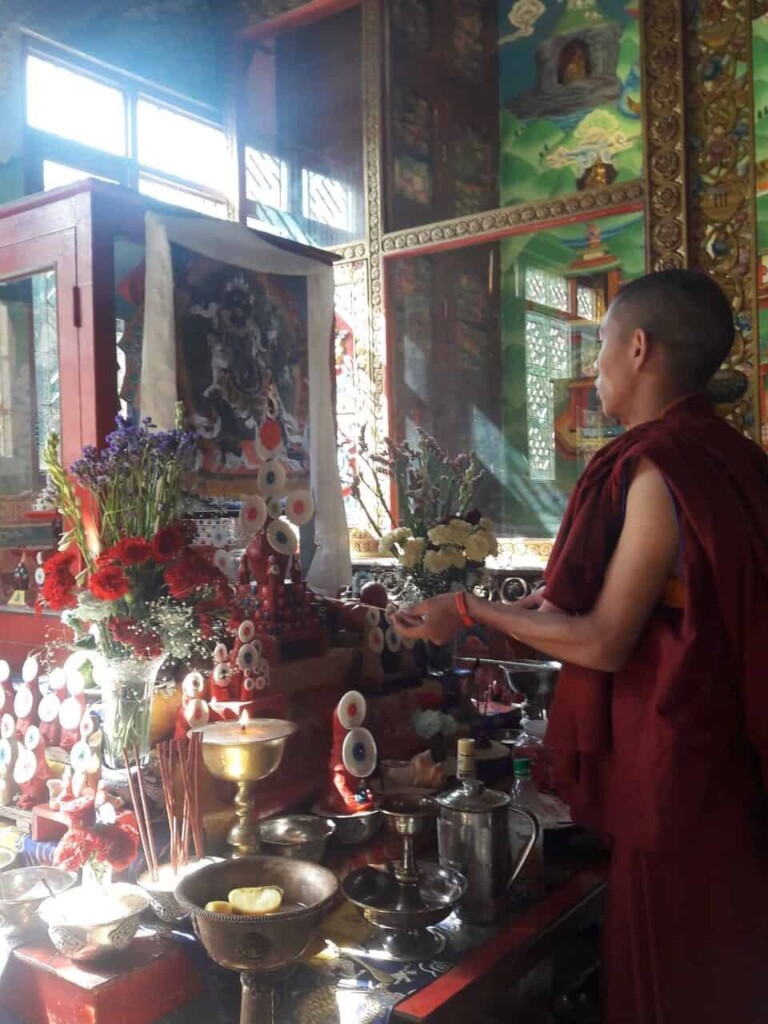The annual program of pūjās in the Do-Ngak Ling Monastery started on May 16th with the 3-day pūjā of the ḍākinī called Vajra Claw (Tib. Dorjé Dermo). This monastery is located in Chapagaon, a beautiful Newari town that has one of the five well-known temples of the ḍākinī Vajravārāhī. The monastery is right beside Vajravārāhī ’s temple, which is also the main place where the local Newari community get together for both their spiritual practice and social gatherings.
The monastery’s complex is a beautiful place worth visiting any time as a pilgrimage site. The main temple is at the center, surrounded by the Lotus Light Dharma Institute (almost completed!) to the left, the Vajra Varahi Health Center to the right, and Zandok Palri building (in progress) on the back.

I had the opportunity to stay for a couple of nights on site for the whole duration of the pūjā. Being in the monastery felt like being at home. Lama Pema, who is the monastery’s manager, welcomed us visitors as part of the family. The days would start with the sound of the gong that calls for the daily morning prayers. We would then share breakfast with our hosts and the visiting Lamas in the diner, while chatting on Dharma topics and sharing funny personal stories. It felt like we were among members of the same family gathering together for a special joyful occasion. Our conversation would end with the sound of the gong, calling us to the temple for the first session of the puja.
This is the first time that our sangha performed this practice as a group. Lama Ngawang Yeshe, one of our senior lamas, guided the ceremony as the vajra master. His main teacher was Tulku Urgyen Rinpoche, who taught him the details of the rituals of our Chokling Tersar lineage. Lama Ngawang not only guided the practice, but also gave basic instructions during the pūjā on how to practice this sādhana. During the practice we all chanted together the sādhana, recited thousands of mantras, accumulated hundreds of feast offerings and repeatedly read Vajra Claw’s dhāraṇī until the chant master would indicate that we had completed the number of recitations required for the session. It was an intense practice!












The Power of Vajra Claw Practice
The lamas mentioned that this practice is considered very powerful. They explained that Vajra Claw is a wrathful ḍākinī whose activity is related with pacifying negative obstructing forces. In particular, Vajra Claw’s dhāraṇī has the power to stop or block these forces, whether they appear in the form of external forces in nature, other people’s negative actions, our body sicknesses, fears or mental problems. It also has incredible benefits, all of which are described in detail in the text. According to the text, this dhāraṇī protects by wearing it, reading it, or placing it where the problem is taking place.
I was fortunate to participate in this pūjā and feel extremely grateful with our Guru Kyabgön Phakchok Rinpoche, whose immeasurable love and kindness made possible such an event for the benefit of our Sangha around the world and all sentient beings!







